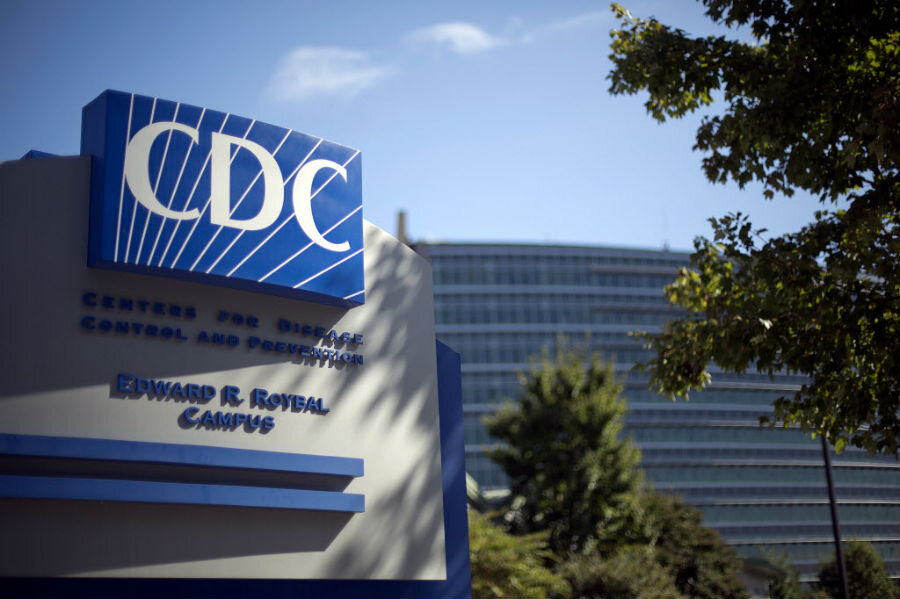Lapses at high-security CDC labs reveal culture of negligence
Revelations of safety breaches at federal biosecurity laboratories reveal gaping holes in safety protocols, a lack of independent oversight, and an apparent culture of hubris among researchers who work with dangerous biological agents, biosecurity experts say.
In the past week, the director of the Centers for Disease Control and Prevention (CDC) announced three separate incidents:
- In June, scientists at the CDC's Bioterrorism Rapid Response and Advanced Technology lab exposed 80 unprotected workers to pathogenic anthrax.
- Weeks earlier, the CDC’s influenza lab shipped samples of a benign avian flu virus that had been cross-contaminated with more pernicious strain to a US Department of Agriculture facility.
- Researchers at a Federal Drug Administration lab operated by National Institutes and Health uncovered long forgotten vials containing the smallpox virus circa 1954 that were supposed to be consigned to international repositories.
The incidents have shone a light on a broader issue of lapses in safety and security at bio labs operated and funded by the federal government.
“The only thing that is new here is the public attention,” says Rutgers chemical biology professor Richard Ebright, who is scheduled to testify before a subcommittee of the House Energy and Commerce Committee Wednesday. He says internal audits by the USDA and the CDC have shown “major violations in training, in engineering controls, and in operating procedures for work with biological weapons agents in labs.”
Historically, such reviews have been presented to oversight committees within the same agencies that perform and fund the biological research. “We need a federal agency that is independent of the agencies that perform and fund the work,” Professor Ebright adds.
CDC Director Thomas Frieden suggested during a July 11 press conference that CDC researchers may have become desensitized to the risks posed by the organisms they study.
“There probably was a certain amount of hubris involved,” says William Schaffner, chairman of preventative medicine at Vanderbilt University in Nashville, Tenn. “People can get into their head that ‘we are the epitome of lab safety.’ That kind of thinking can get you into a trap.”
Dr. Schaffner suggests that checklists similar to those used by airline pilots could help to alleviate the human tendency to cut corners. Dr. Frieden has taken several steps to prevent similar situations from happening again, including a moratorium on the transfer of biological samples out of any high security lab pending lab-by-lab inspections, the creation of a new director of laboratory safety position at the CDC, and a directive to take disciplinary action against any staff member who knowingly violates protocols or fails to report an incident.
He and others suggest that the revelations may indicate that there are too many facilities authorized to work with these pathogens in the United States.
The number of Biosafety Level 3 (BSL-3) labs increased dramatically after 9/11 and the subsequent anthrax mailings that killed five people. Today there are more than 1,000 BSL-3 laboratories. In those facilities, more than 11,000 individuals have access to biological pathogens, Ebright adds.
“Those numbers are higher by a factor of 20 to 40 than they were a decade ago,” Ebright says. “They need to be rolled back to the level they were a decade ago. That would immediately, instantly, and with mathematical certainty reduce the level of risk by a factor of 20 to 40.”
Infectious disease physician Amesh Adalja worries that these incidents will sour the American public on bioterrorism research.
“These labs need to exist in communities, and individuals are going to know that accidents can happen anywhere and they are going to have genuine worry about their neighborhood,” says Dr. Adalja, who is a senior researcher at the Center for Health Security at the University of Pittsburgh Medical Center in Baltimore. “While these risks are very rare and minimal and ideally they shouldn’t pose a barrier to doing this vital research, they are in effect going to because individuals are going to be already leery of these things going in their backyard.”
Researchers say the study of biological pathogens is crucial to identifying and responding to possible biological attacks.
“There are a lot of terrorists around the world who have a very keen interest in using pathogens to attack our interests,” says biology professor Charles Bailey, who heads the National Center for Biodefense and Infectious Diseases at George Mason University in Manassas, Va. “Anthrax is without a doubt very easy to come by and distributed naturally worldwide. When compared with other pathogens it’s probably one of the easiest to grow and produced and get into a state where it can be aerosolized.”






